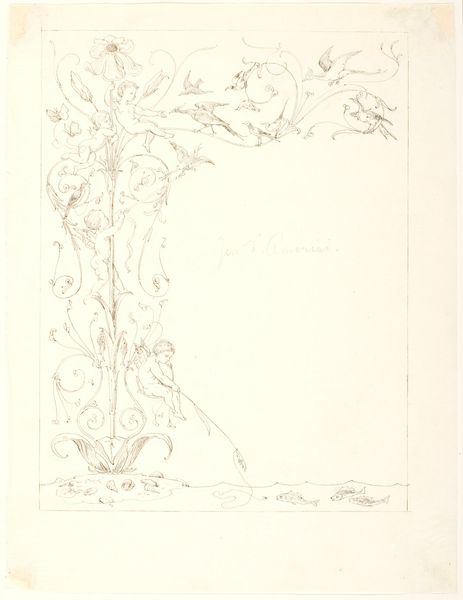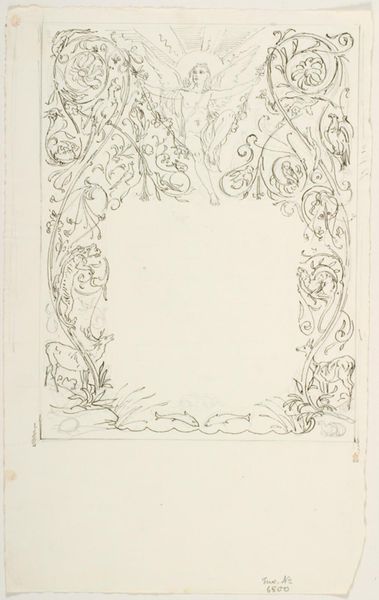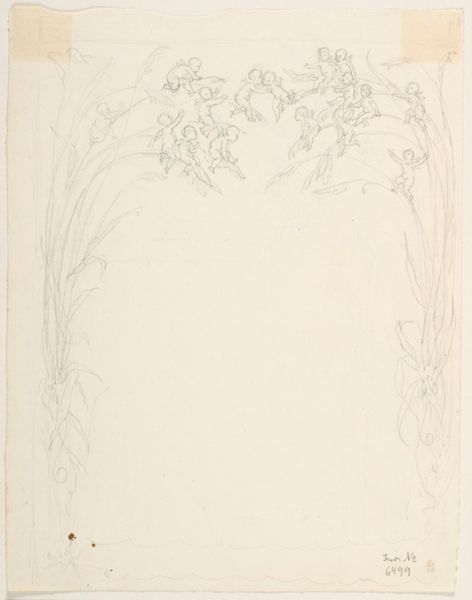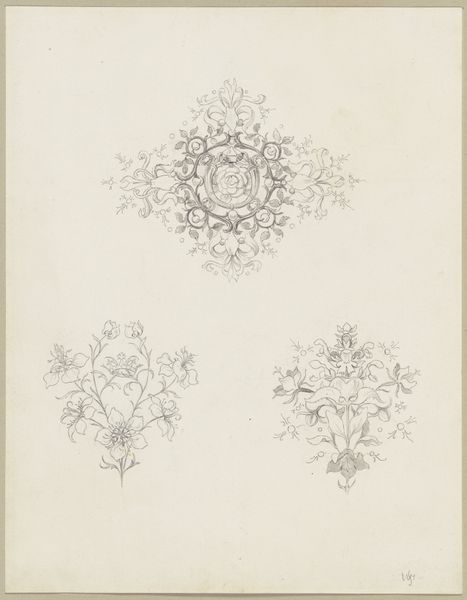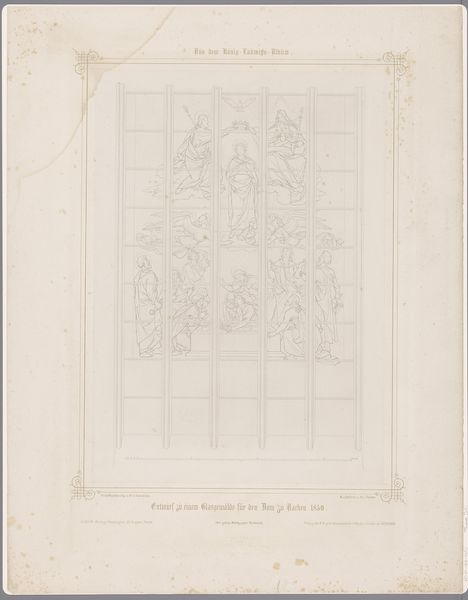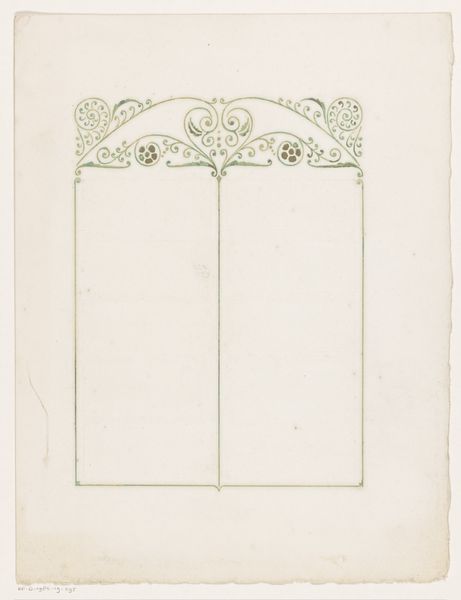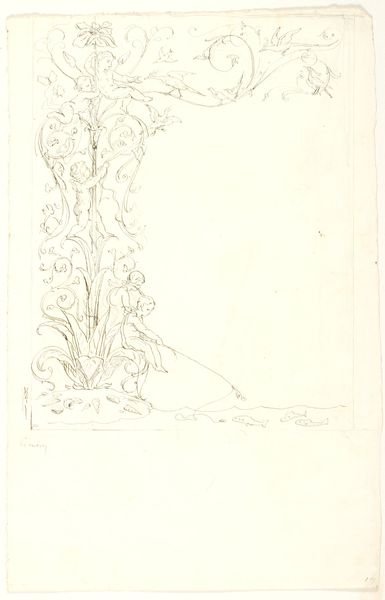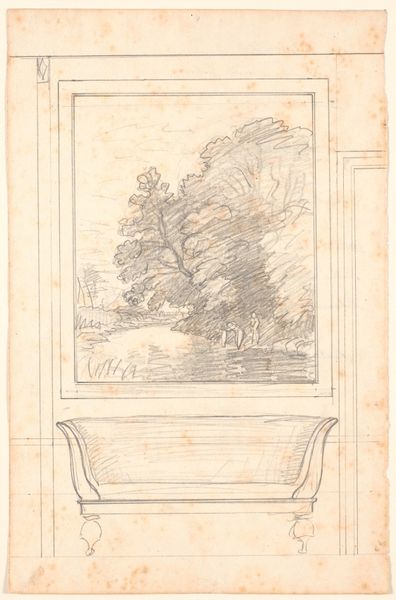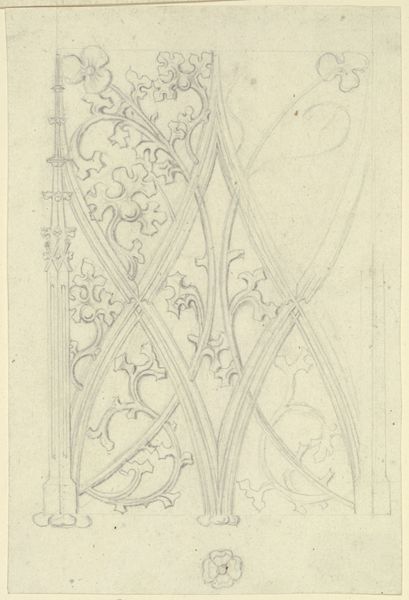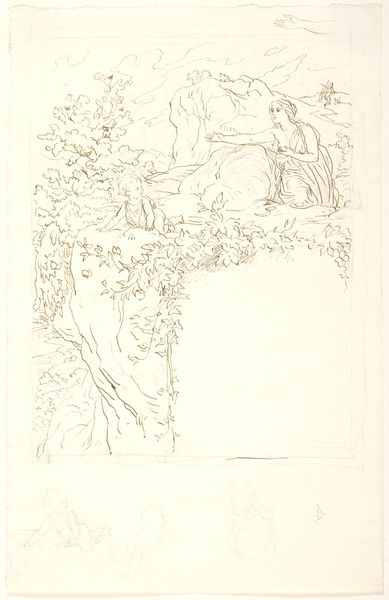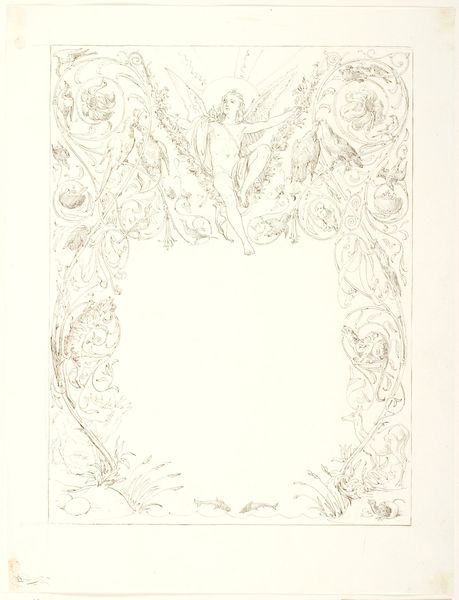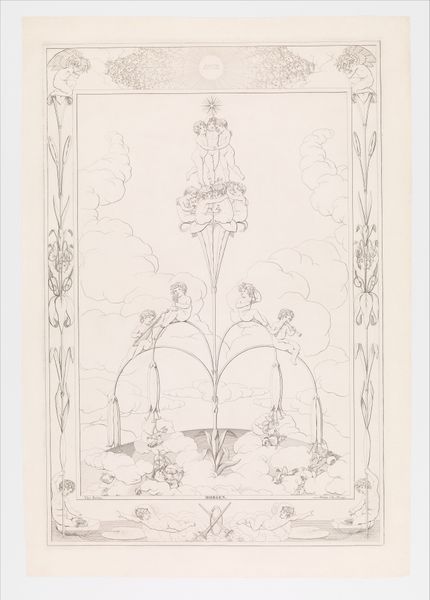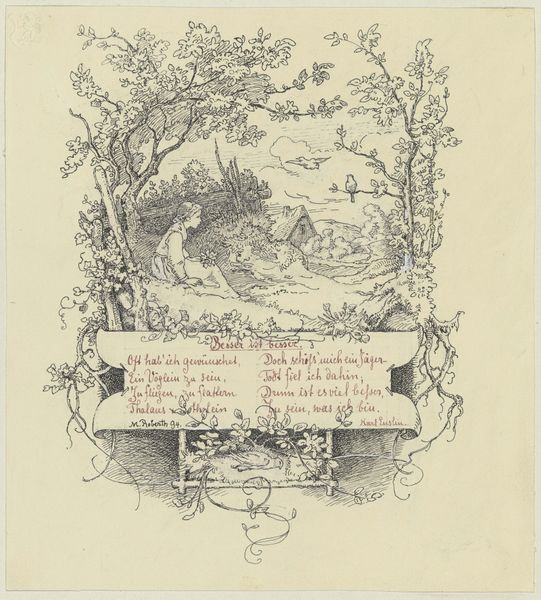
Dimensions: 270 mm (height) x 207 mm (width) (bladmaal)
Curator: It’s fascinating to consider Frølich’s “Gyngende amoriner,” created around 1860 using ink and pen. What strikes you most about it? Editor: It feels both whimsical and delicate. The drawing style makes me think of those old romantic postcards with cherubs hidden in flowery designs. But looking closely, it feels a little sad too. The cherubs almost seem trapped. How would you interpret this work? Curator: I think your observation of sadness is key. Consider the Romanticism movement and the growing societal constraints, particularly for women. Could these cherubs represent the stifling of youthful spirit, innocence, or perhaps even female agency within a patriarchal structure? Editor: So, the cherubs, instead of being playful, symbolize a loss of freedom? Curator: Precisely. Frølich might be subtly critiquing the idealized domestic sphere, where these cherubic figures are confined within the boundaries of social expectations. The frame made with plants can be interpretd as bars or fences too. Do you agree? Editor: That shifts the entire meaning for me. What seemed merely decorative now feels like a poignant commentary. How interesting that it appears at first to celebrate a world but is actually trapping these creatures into something. Curator: The piece certainly encourages us to question what appears idyllic. By delving into the social context, the visual elements become a potent form of subtle, visual resistance. Editor: It is all about not taking things at face value! I will try to remember that when analysing art in the future.
Comments
No comments
Be the first to comment and join the conversation on the ultimate creative platform.
